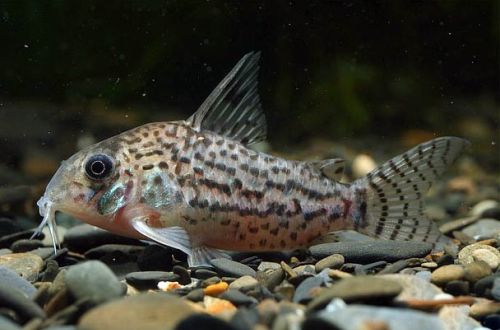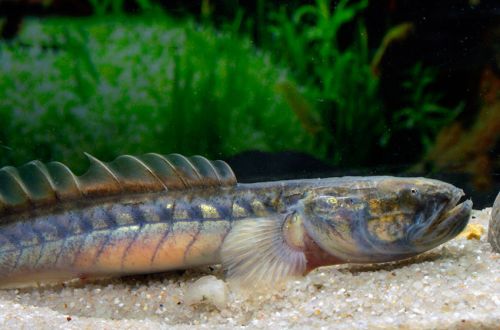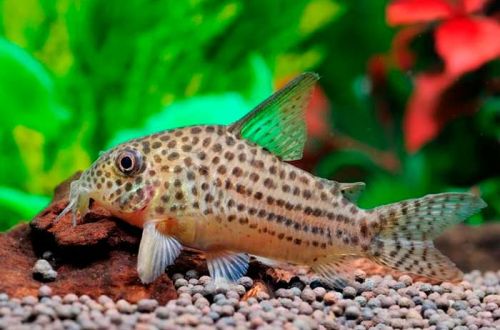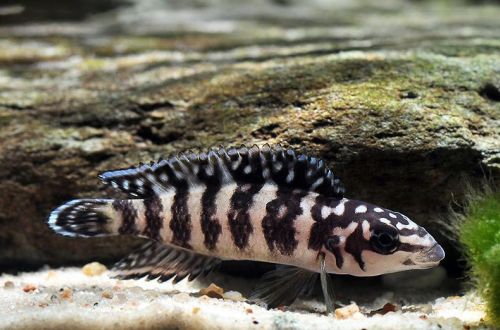
Yulidochromis Muscovy
Julidochromis Maskovy, scientific name Julidochromis transcriptus, belongs to the Cichlidae family. Moving fish that are interesting to watch. Easy to keep and breed, if the necessary conditions are provided. May be recommended for beginner aquarists.

Contents
Habitat
Endemic to Lake Tanganyika in Africa – one of the largest freshwater bodies of the planet. The lake serves as the water border of 4 states at once, the largest length is in the Democratic Republic of the Congo and Tanzania. The fish live along the northwest coast at depths of 5 to 24 meters. The habitat is characterized by a rocky coastline interspersed with sandy substrates at the bottom.
Brief information:
- The volume of the aquarium – from 100 liters.
- Temperature – 23-27°C
- Value pH — 7.5–9.5
- Water hardness – medium to high hardness (10-25 dGH)
- Substrate type – sandy
- Lighting – moderate
- Brackish water – no
- Water movement – weak, moderate
- The size of the fish is about 7 cm.
- Food – any sinking food
- Temperament – conditionally peaceful in relation to other species
- Keeping in a male/female pair
- Life expectancy up to 7–8 years
Description
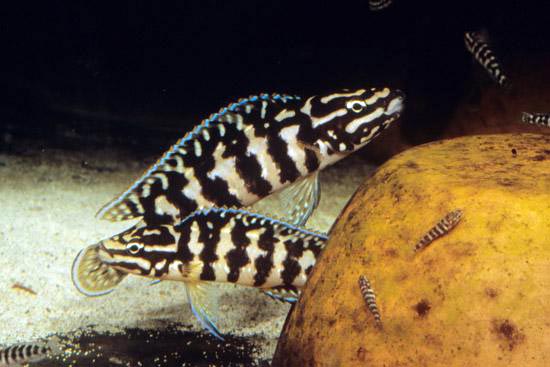
Adult individuals reach a length of about 7 cm. Sexual dimorphism is weakly expressed. To the unprofessional eye, the males themselves are practically indistinguishable from each other. The fish has a torpedo-shaped body with a long dorsal fin stretching from head to tail. The coloration is dominated by black and white colors, forming a pattern of vertical stripes. A blue border is visible along the edges of the fins and tail.
Food
In nature, it feeds on zooplankton and benthic invertebrates. The aquarium will accept dry sinking food (flakes, granules). You can diversify the diet with frozen or live foods, such as bloodworms and brine shrimp.
Maintenance and care, arrangement of the aquarium
The optimal volume of the tank for a small group of fish starts from 100 liters. The design is simple, enough sandy soil and piles of stones, rocks, from which caves and gorges are formed. Any hollow object of a suitable size suitable for use in an aquarium can be used as a shelter, including ceramic pots, pieces of PVC pipes, etc.
When keeping Julidochromis Maskovi, it is important to ensure stable water conditions with hydrochemical values (pH and dGH) characteristic of Lake Tanganyika. Buying a good filtration system and cleaning the tank regularly, along with a weekly water change (10-15% of the volume) with fresh water, is key.
Behavior and Compatibility
Julidochromis are able to get along with other non-aggressive species of comparable size originating from the same habitat. Intraspecific relationships are built on the dominance of stronger individuals, so a large aquarium is required for a group of fish. In small volumes of water, they can live alone or in pairs.
Breeding / breeding
Breeding in a home aquarium is possible. During the mating season, the fish form a monogamous pair. Moreover, it is formed only among males and females who grew up together. For spawning, a certain area is selected at the bottom of the aquarium with a secluded cave, in which the female alternately lays several portions of eggs. Thus, a brood of fry of different ages is obtained. During the incubation period, the fish protect the clutch, parental care continues after the appearance of juveniles.
Despite the protection, the survival rate of fry is not high. They fall prey to other fish, and as they grow older, their own parents. It is most effective to carry out breeding in a separate species aquarium.
Fish diseases
The main cause of most diseases of cichlids from Lake Tanganyika is unsuitable housing conditions and poor quality food, which often leads to such a disease as African bloat. If the first symptoms are detected, you should check the water parameters and the presence of high concentrations of hazardous substances (ammonia, nitrites, nitrates, etc.), if necessary, bring all indicators back to normal and only then proceed with treatment. Read more about symptoms and treatments in the Aquarium Fish Diseases section.



